
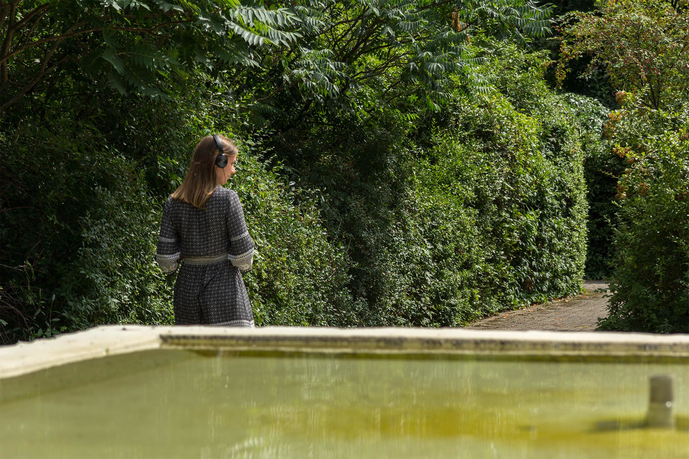
© Andy Koch

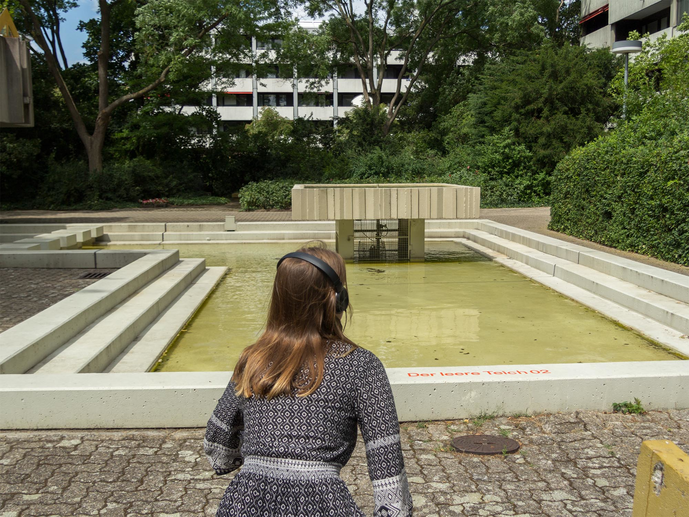
© Andy Koch

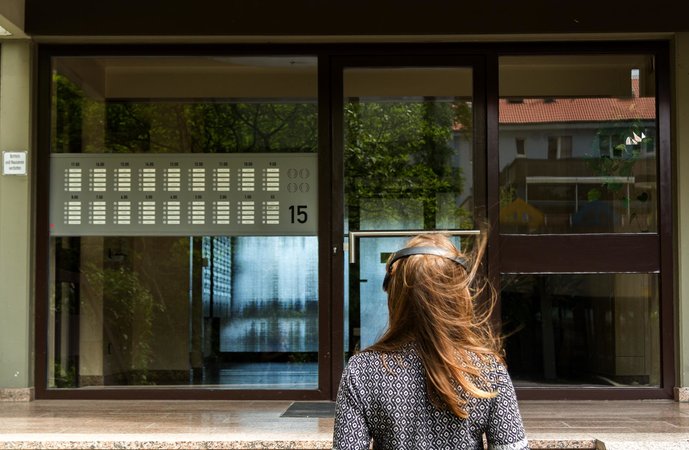
© Andy Koch

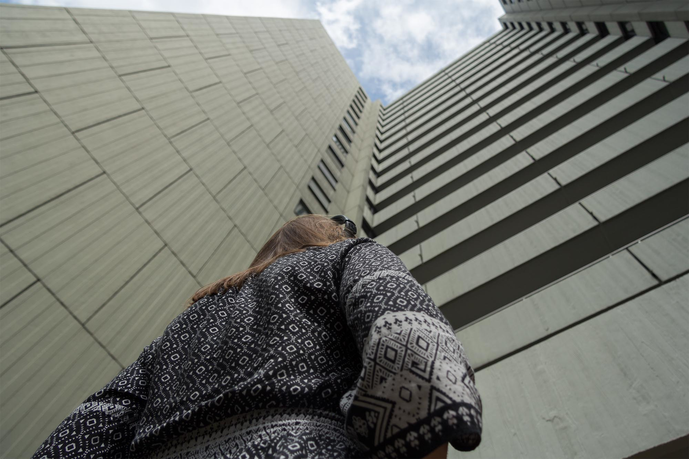
© Andy Koch


Hörbeispiel (© Andy Koch)

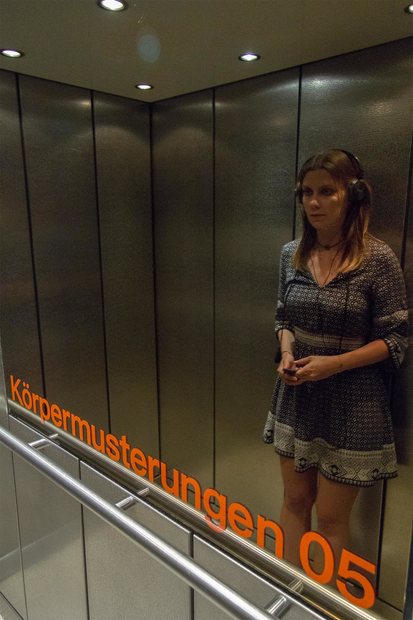
© Andy Koch

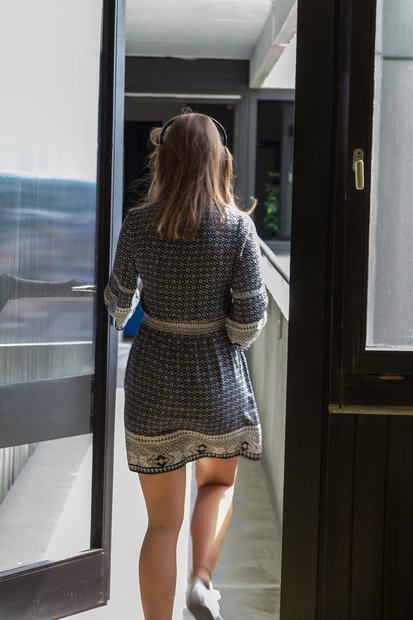
© Andy Koch

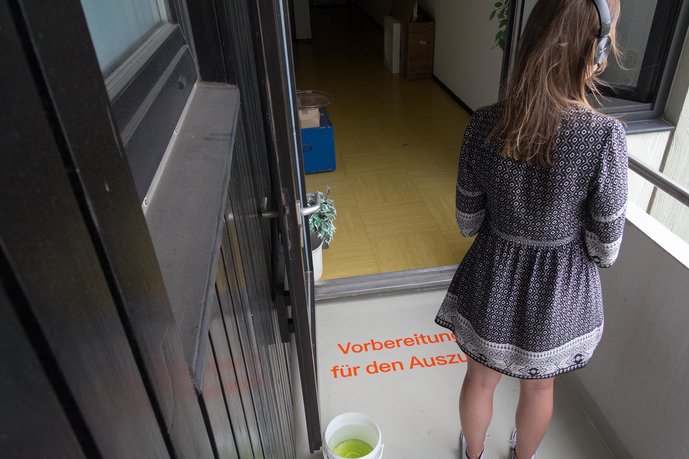
© Andy Koch

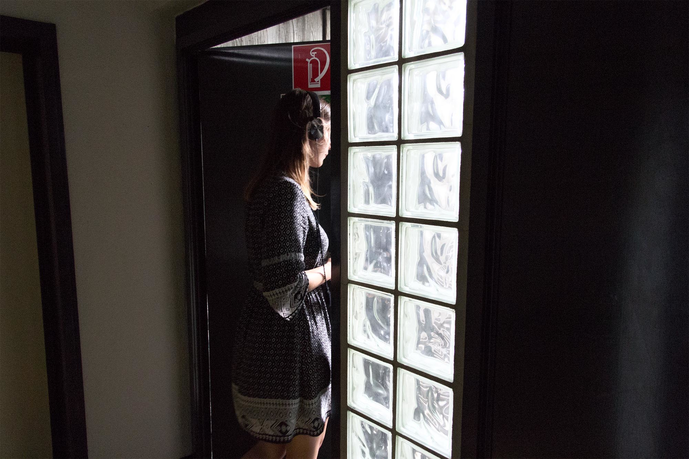
© Andy Koch

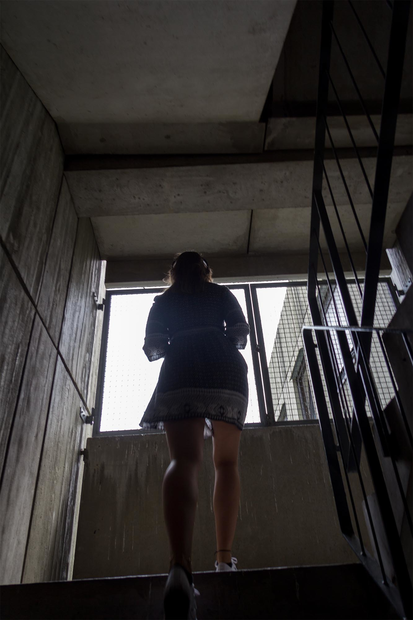
© Andy Koch

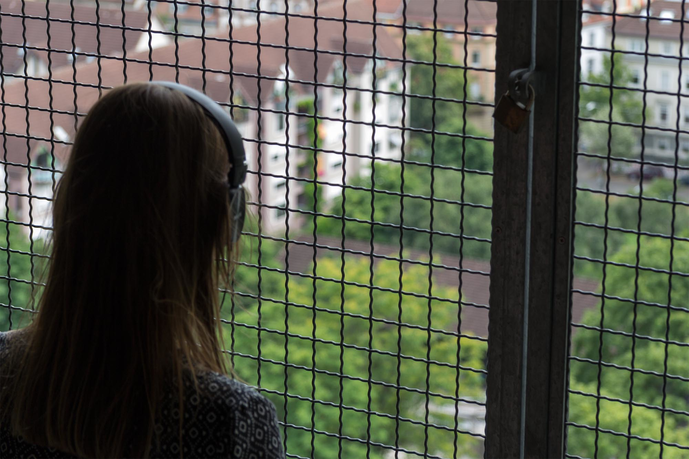
© Andy Koch


© Andy Koch

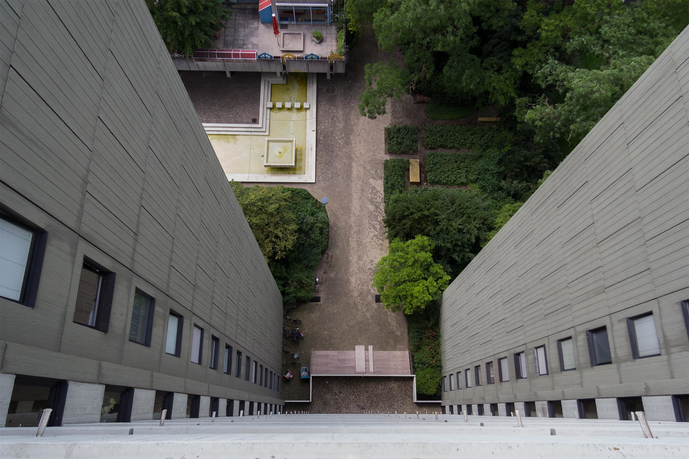
© Andy Koch


© Andy Koch


Flyer HOCHHAUS Detail (© Bruno Jacoby)
The High-Rise audio walk leads the participants to specific places of the high-rise on Kaiserallee 15 in Karlsruhe, letting the building take the lead role. Texts from varying perspectives are worked into nine audio tracks. The artist, who lives in the high-rise in question, combines her own observations within the high-rise terrains as well as those of the other residents with quotes from a historical advertising brochure for the complex with original sound from an interview with the caretaker who has been looking after the building since its completion, and with excerpts from J.G. Ballard's novel “High-Rise” from 1975. The tracks are named after selected chapters in the novel. They lead the narrative and indicate the places where the audio walk participants are lead with a narration with verbal instructions. Through mixing fictional, documentary, and original material, four text and time-planes appear: those of the high-rise construction, that of the novel, and the present. Increasingly they intertwine, though the caretaker stands between these times, acting as the (real) figure and interviewee bringing them together.
What is heard is complemented by the visual perception of the audio walk participants, who follow the ascent of the protagonist from the novel alone, into the upper floors of the concrete giant. The audio text is played on a hand-held MP3 player and headphones. The novel reflects the concrete high-rise boom in the seventies. This is also the time when the caretaker of Kaiserallee 15 found new work and moved from the family house in Bavaria into the high-rise, from which he would never leave. Certain characters are taken from the novel, specific high-rise residents, who accompany the participants on their way through the building and whose role they can always assume through their physical presence on site. This is contrasted with the caretaker’s reports and the observation texts. The extremes imagined by Ballard, in which high-rise life ends in complete isolation in the chaos of anarchistic conditions, overlap with the statements of the caretaker. In relation to the other texts, the interview statements create discrepancies on the one hand, but also a connection between fiction and reality on the other. The acoustic concept does not only include the spoken and read texts as well as the atmospheric sounds from the house and its surroundings; musical insertions also support the sound concept. However, this is only fully realised when the sounds from the headphones are mixed with the real acoustic events present on site. The participants experience it in connection with their own actions and the multiple sensory impressions through their physical presence.
The texts are site-specific, whether in the basement by the emergency exit, where the outside is only kept back by a mesh door, in the external staircase of the building, which serves as a home for the pigeons, or at the fountain in the inner courtyard. The audio text defines the actions and the way. The titles of the tracks are visibly installed on site as lettering and signal the progression to the next track. They also augment the auditory element of the visual locations. They reach into the existing space from outside, describe the location, change it and transport the narrative from the original book into the real environment in the form of writing. The visible titles enter into a symbiosis with what is heard on the one hand, and with the surroundings on the other.
The participants’ stance is participatory. They follow the instructions of the audio walk and are thus directly involved in the texts. The observations incorporated into the text mix with those of the participants during the walk. They overlap and thus become individual experiences of the participants. The residents also become actors who meet the participants on their walk or who observe them. The specific choice of location and texts, according to which the parts of the audio walk have been developed into a narrative strand, restrict the freedom of participants on site, as long as they do not actively resist the acoustic instructions. They can only ever advance as far as the voice allows and are thus subject to the tempo and rhythm of the story, which forms the basis of the gradual development in Ballard's novel. The space and narrative thus unravel step by step. When you enter the inner courtyard, located far away from the street, you officially find yourself on private property. The participants cross this threshold and find spaces between outside and inside, between public and private.
The high-rise at Kaiserallee 15 is certainly not a residential machine in the sense of Le Corbusier, who integrated all utilities in the building and whose concept Ballard may be referring to. The building project at Kaiserallee did not focus on complete self-sufficiency, but rather on life in the immediate vicinity functioning as an ordinary residential building for different people. As a high-rise building, the residential complex is nevertheless subject to a certain connotation. Many people living in a confined space, isolation, the anonymity, loneliness and perhaps the danger that might be posed by it, adopt a general understanding of life in such a complex. The problems addressed in Ballard's scenario are partly reflected in the reality of high-rise life at Kaiserallee 15, for example in fires, unusual technology or individual residents who dispose of their rubbish over the balconies. In juxtaposing these parallels to the novel with smaller casual observations from the present about the simplicity and frugality of life at Kaiserallee 15, for example turning on the fountain in spring, the high-rise building in its everyday life becomes the focus in the audio walk. Minor dramas rather than major breakdowns are the order of the day. The participants are brought back to this plane at the end of the walk on entering a flat on the 17th floor of the high-rise and meeting its residents. One parts with the fictional story by taking off the headphones and getting into conversation. The possibility for direct conversation with the residents gives the participants the opportunity to exchange experiences and ask questions and gives them an insight into one of the most private places in the building.
The combination of all the played back and lived elements on site, the sensual perception of each station and of the location as a whole, puts the structure of collage texts and the participation of the audience as actors together. The places that were visited merge with the text into a playground of documentary and fictive narrative. Through the narration and multi-sensory experience, the complexity of the high-rise becomes tangible in a new way.
Tracks:
01 Eine Wegstrecke (Up!)
02 Der leere Teich (The Drained Lake)
03 Ein glückliches Arrangement (A Happy Arrangement)
04 In den Niederungen (Into the Drop Zone)
05 Körpermusterungen (Body Markings)
06 Vorbereitungen für den Auszug (Preparations for Departure)
07 Die Raubvögel (The Predatory Birds)
08 Gefahr in den Straßen des Himmels (Danger in the Streets of the Sky)
09 Letzter Triumph (Final Triumph)
Photos: Andy Koch
Flyer design and audio walk text: Bruno Jacoby
Narrators: Andy Koch, Hausmeister der Kaiserallee, Veronika Scharbert
Participating students: Veronika Scharbert, Bruno Jacoby
Period: Summer semester 2019; length: ca. 55 min
Location: High-rise at Kaiserallee 15, Karlsruhe
Supervision: Prof. Andreas Müller, Thomas Rustemeyer
References:
J.G. Ballard: High-Rise
EWG Home Centre Kaiserallee information prospectus from 1968
Interviews with residents at Kaiserallee 15
Interview with caretaker at Kaiserallee 15
George Perec: Träume von Räumen
With the use of:
Magix Music Maker
With sounds and music from:
white bicycle
Title: April Sun Playalong
Link: https://www.audiyou.de/beitrag/april-sun-playalong-9117/
(changes have been made)
Starscade
Title: sfx-radio-static.flac
Link: https://freesound.org/people/Starscade/sounds/397311/
(changes have been made)
Satuniman
Title: Gramophone
Link: https://freesound.org/people/Setuniman/sounds/178579/
(changes have been made)